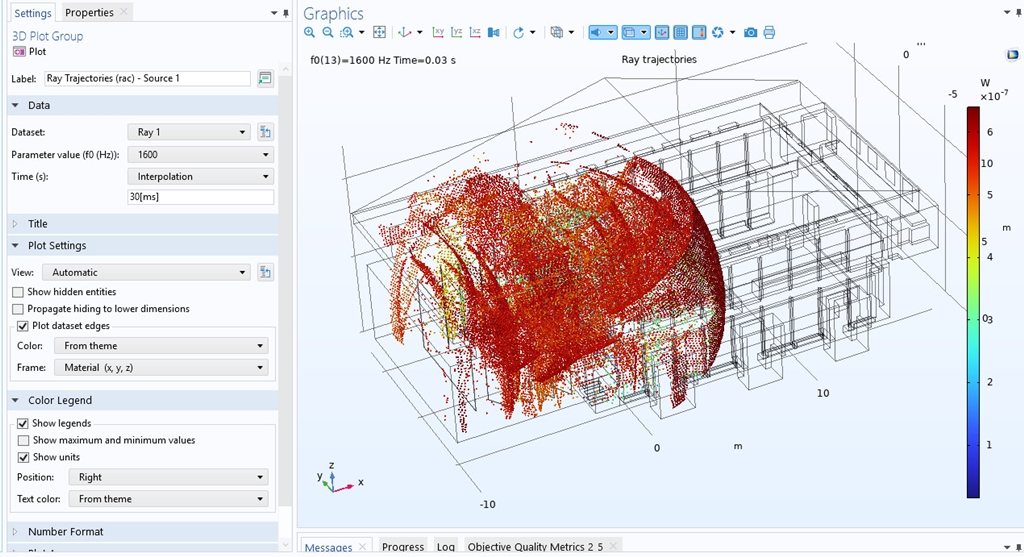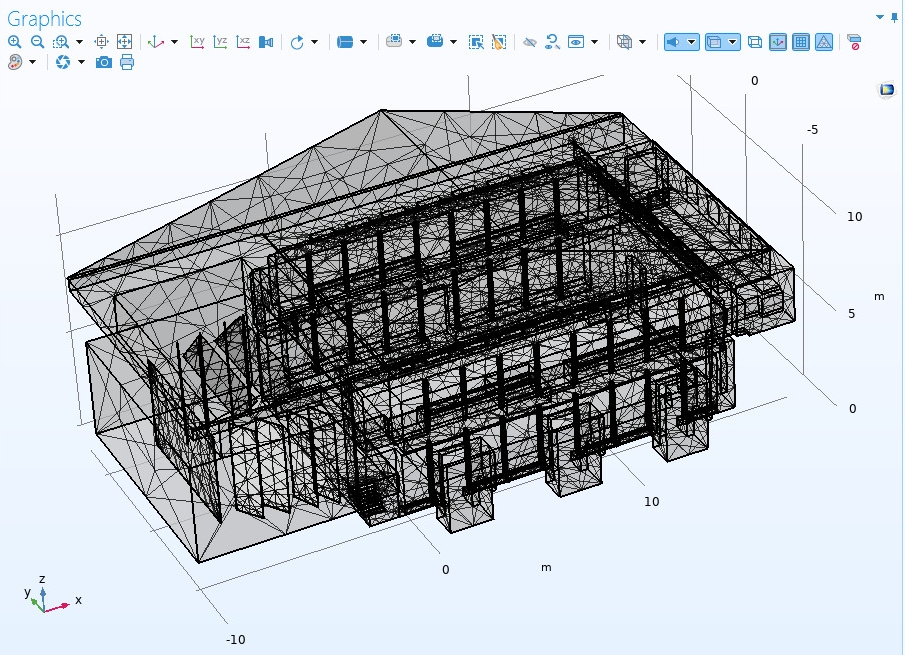
DASM uses complex predictive and analytical software to model and study the state of sound in a 3D virtual space.
As pioneers in the use of sound modeling tools, we model environments through iterative processes using the most advanced acoustic modeling and predictive software in the industry.
These software tools facilitate “sonification” – a complex algorithm that allows for the input of raw, unprocessed audio files (such as speech announcements or musical recordings). The sound for future audio scenarios is then recreated in a virtual building environment. Accordingly, all stakeholders can hear music, speech, or any audio content within the virtual design reality. The outcomes provide invaluable tools for the design and planning process, as well as the ability to reproduce sound more faithfully based on the changing source environment.
DASM designs and simulates sound for both indoor & outdoor spaces.
Predicting sound fields in built environments (both indoors and outdoors) plays a crucial role in acoustics, encompassing both design and construction environments. In the industry, various predictive methods are indispensable, such as the development of sound-related products. Additionally, predicting the sound performance of spaces using simulation tools is a widely used and preferred method over costly scale model studies. In acoustic design environments, predictive methods are used to develop new concepts for buildings or building elements to create sound that protects humans from adverse health effects, while enhancing health, performance (e.g., in work environments), and sound quality (e.g., in concert halls).
Nowadays, a major challenge in developing sound prediction methods is creating realistic and real-time sound spaces. The performance of sound spaces has long been measured by metrics related to equivalent sound pressure levels and the decay of sound levels over time. Perceptual evaluation of the sound environment cannot be determined by such measurements alone. Time-dependent effects, such as the impact of moving sources and/or receivers and the relationships arising from the nature of the sound field source, determine how subjects perceive it. Therefore, to support the design evaluation of perceptual sound fields, real-time, time-dependent sound field prediction methods are extremely important. This design topic receives considerable attention in terms of sound. In noise control, the layout of sound implies that an active sound field needs to be achieved (including both natural and human-made sounds). Besides supporting visual perception in design, sonification methods are also useful as a design tool for buildings and in conveying noise control measures to the public in the environment (e.g., what will you hear after a noise barrier is installed in your backyard?).


Whether inside buildings or in city centers, sound waves and vibrations are major challenges to the quality and comfort of living spaces. We deploy both digital and experimental analysis methods at all levels (from the microstructure of materials to the urban scale) combined with extensive expertise to help everyone contribute to sustainable development (developers, manufacturers, architectural firms, etc.) adequately address their most complex challenges: urban sound environment, inconvenience caused by underground constructions, complex multi-layer systems, and clarity in space.
Sound comfort, sound performance, regulatory compliance: meeting these requirements means defining the acoustic properties of materials and components within structures (buildings, urban infrastructure, and transportation). We use a special sound simulation software suite, equipped with a large set of computational and experimental tools to describe the acoustic characteristics and vibrations of all types of products and systems in the construction industry. Our advanced specialized tools include:
- Analysis of complex improved sound systems
- Realistic rendering and spatialization (3D) of complex sound environments
- Test and evaluate environmental and building vibration propagation
- Predict configuration noise during processing.
- Adjust the sound of the forum.


